
Cats spend a lot of time asleep, and you may have idly wondered whether all those different sleep positions mean anything about their mood, stress levels, or health. Actually, how your cat chooses to sleep can indeed offer insight into their mental and physical health. We spoke to several veterinarians and a certified cat behaviorist for their take on cat sleeping positions, plus what to keep in mind about feline sleep habits in general.
Key Takeaways
- Your cat’s sleep position can be a clue into their mental and physical health.
- Being familiar with your cat’s preferred sleep positions is a good way to identify changes that could indicate a health issue.
Cat Sleeping Positions Explained by Experts
The Crescent

As the name suggests, the crescent sleep position is when a cat curls up on its side, head bent toward the feet and tail tucked in (similar to a furry little donut!). “Curling up into a crescent shape is one of the most common sleeping positions for cats,” Primrose Moss, a veterinarian in the UK, tells Sleepopolis. “It’s a safe position with the belly concealed from potential predators that leaves your cat able to respond rapidly to any surprises.” Plus, she says it helps cats stay warm and allows them to sleep more deeply than some other positions.
Seeking Shelter

Cats seem to be drawn to tight spaces, whether it’s a box, a drawer, even a sweater. Moss says that’s because despite their reputation as ruthless predators, cats are also a prey species. Dr. Janet Cutler, Ph.D, and certified applied animal behaviorist, tells Sleepopolis that this behavior may have an evolutionary basis that kept cats hidden or protected from predators. “In our homes, they may feel more secure or less likely to be bothered when sheltered,” she says.
But a cat seeking shelter to sleep may also be experiencing stress or illness. “If your cat is hiding more than usual, try to work out what might be causing it, and if you suspect they might be unwell, discuss it with your vet,” says Moss.
Somewhat strangely, some cats also sleep in their litter box. “Just like a box, the tray provides a sense of safety — and also smells like them!” says Moss. In some cases, cats may see it as a reasonable last resort. “Some cats will sleep in litter boxes if no other acceptable surfaces are available, or if they are fearful of other animals or people that are blocking (or near) their sleeping areas — and if the litter is a surface that isn’t as hard to rest on [as other options],” says Cutler.
If it’s a new behavior, sleeping in the litter box can be indicative of a health issue, too. “Conditions like kidney disease, cystitis (bladder inflammation), urinary blockage or a stomach upset may make your cat wary of risking an accident by straying too far from the litter box,” says Moss. She advises contacting a vet if your cat begins sleeping in its litter box, especially if you notice other changes, like drinking more or straining to urinate or defecate.
Belly Up
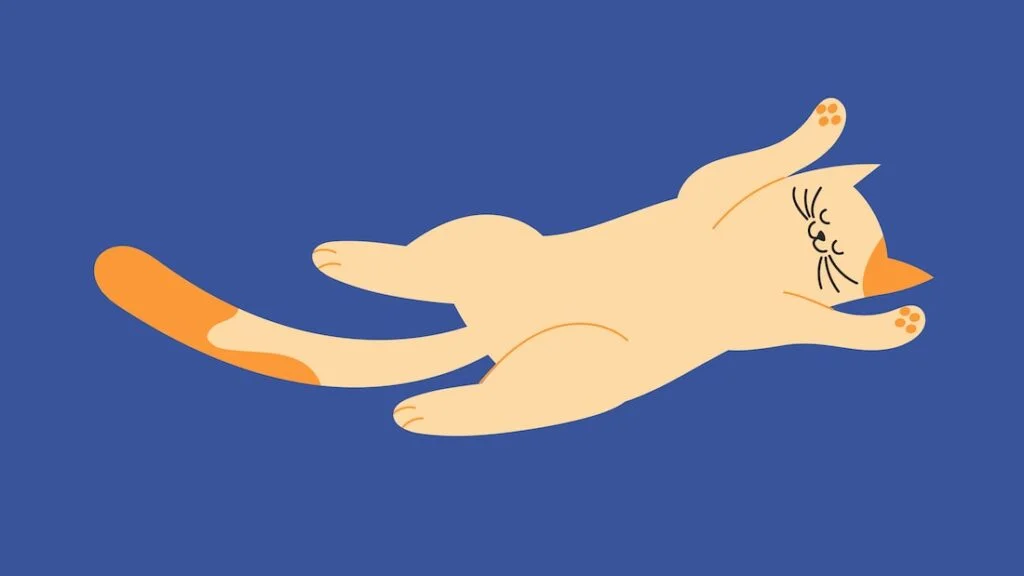
If that furry belly is on display, you’re likely looking at a cat who’s pretty happy. “This sleeping position exposes your cat’s most sensitive areas, so they definitely trust you and are able to fully relax,” says Moss. “Cats are also more likely to lie like this in warm weather, as it can help them to cool down.”
Loafing Around
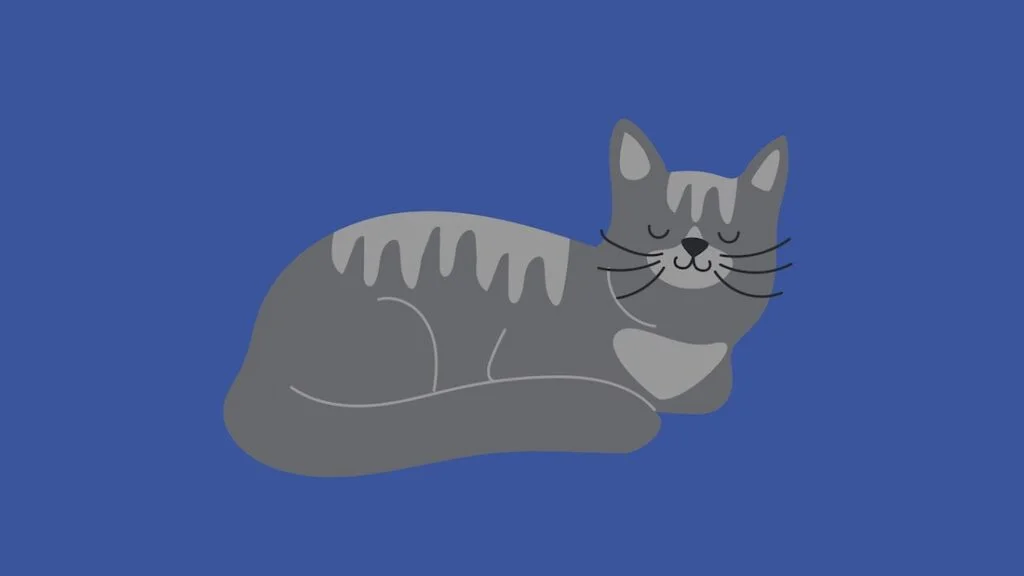
The “bread loaf” sleep position is a classic — upright, with paws and tail tucked in. “A cat that chooses to ‘loaf’ may do so for a number of reasons, including cold temperatures, stress and pain,” says Moss. “This position conserves heat, protects the vital organs and leaves your cat ready to respond to any possible threats.”
Pretzel Style

Any position that has your cat looking like a contortionist can fall into the pretzel category, and it’s typically a sign of a happy cat. “For your cat to pick this position, they need to be pretty relaxed, as they’re usually exposing their belly and aren’t in the best position to respond to any possible threats,” says Moss. It may look downright uncomfortable, but keep in mind that cats are naturally quite flexible. “For them, these odd positions may actually be comfortable,” says Moss.
On Their Side

Cats may begin sleeping in a crescent position and eventually wind up on their sides as they relax more fully. “This also allows them to lose a little more heat than lying curled up, so they may opt for this position in warmer weather,” says Moss.
Hiding Their Face with Paws
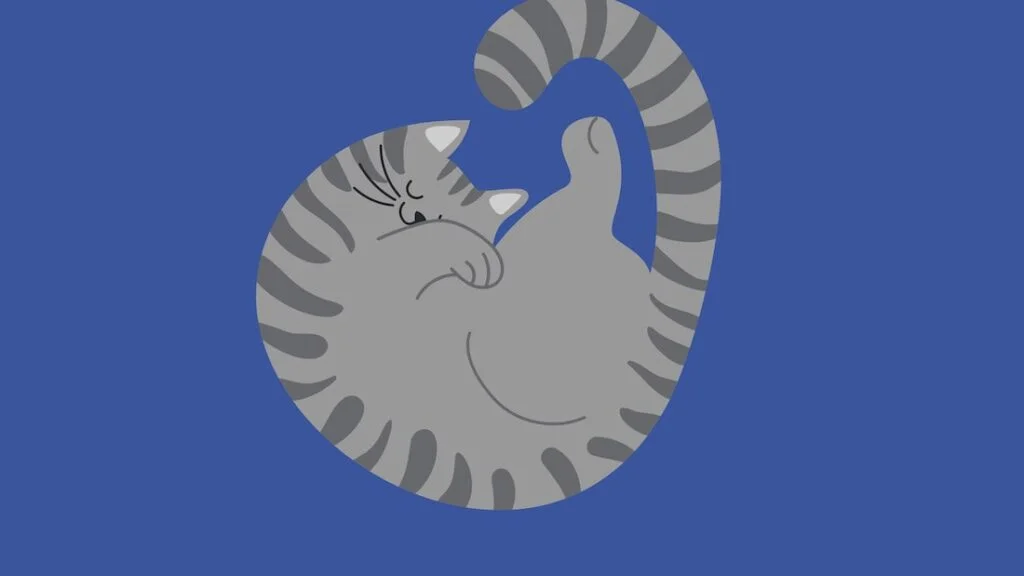
This downright adorable pose may be an evolutionary behavior. “This position protects their eyes and nose, which are vulnerable and critically important for cats,” says Moss. “However, cats may also choose to sleep like this simply because it’s comfortable, helps to keep their face warm and can also block out excessive light.”
Sitting Up
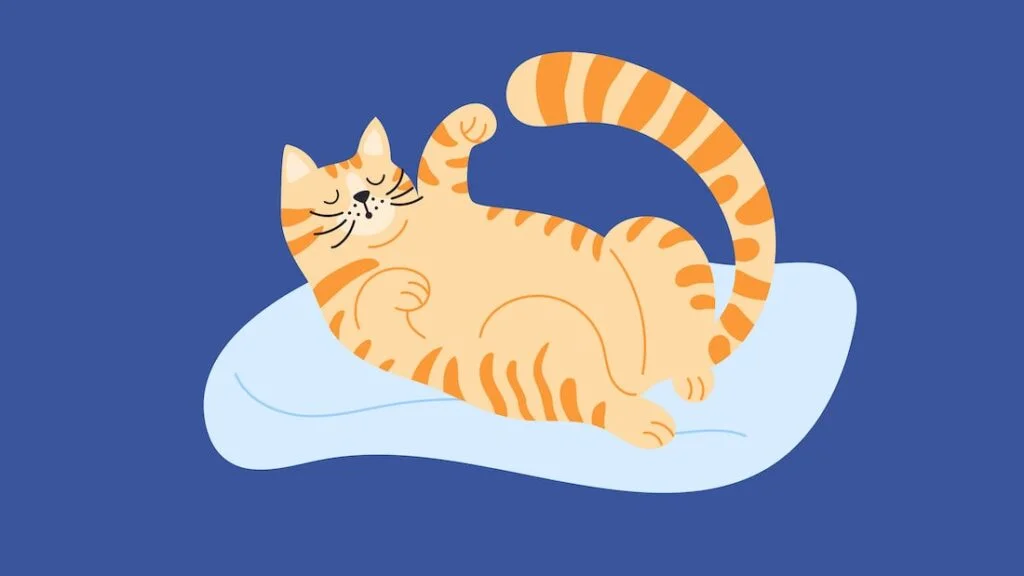
“Cats often doze sitting up, which is normal,” Jamie Whittenburg, DVM, tells Sleepopolis. “However, if you observe that your cat cannot get comfortable or continues to try to lie down but cannot stay lying down due to discomfort or breathing difficulties, this is a sign that they require immediate medical care.”
Eyes Half Open
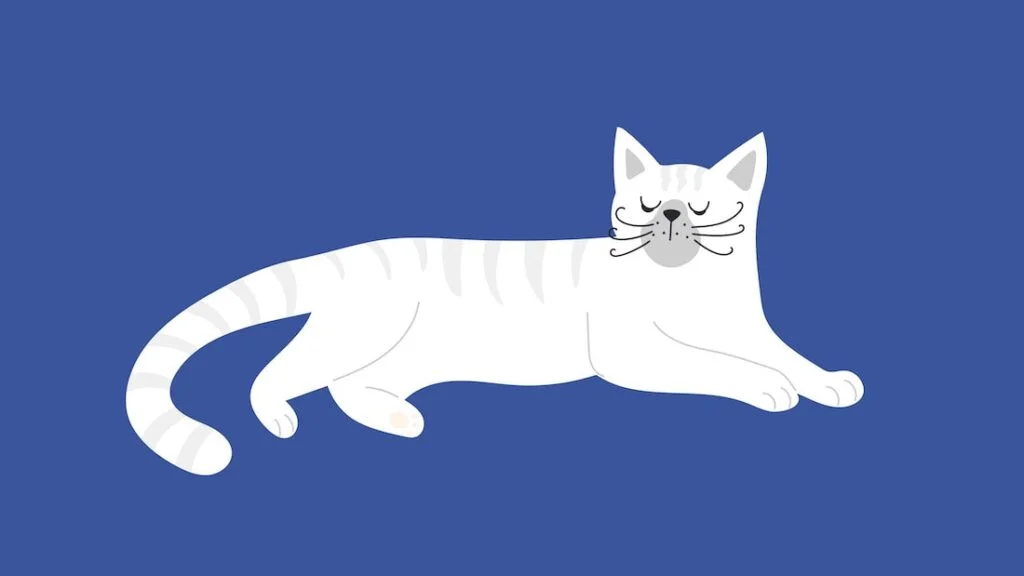
Sleeping with their eyes open? It’s a cat thing! “This position is normal for many cats,” says Moss, pointing out that it can be quite disconcerting when you see it for the first time. “Cats usually only keep their eyes open during light sleep, and this enables them to keep an eye on their surroundings and quickly wake up if needed,” she says.
Superman
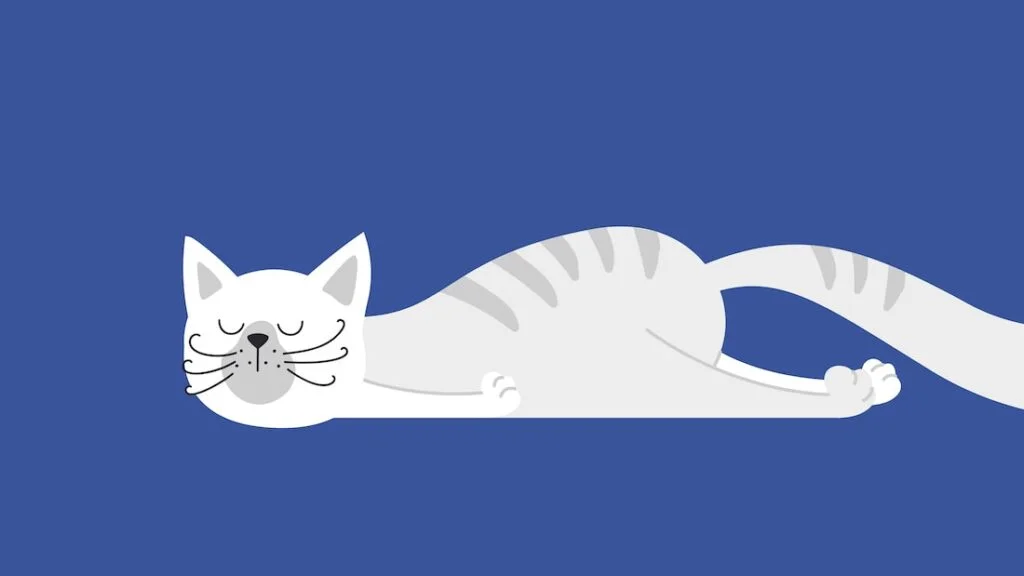
A cat stretched out flat on its belly looks a bit like Superman. And like Superman, your cat is feeling both relaxed but ready to spring into action if need be. “This position can also help them to cool down in summer if they lie on a cold surface,” says Moss.
Perched on the Edge
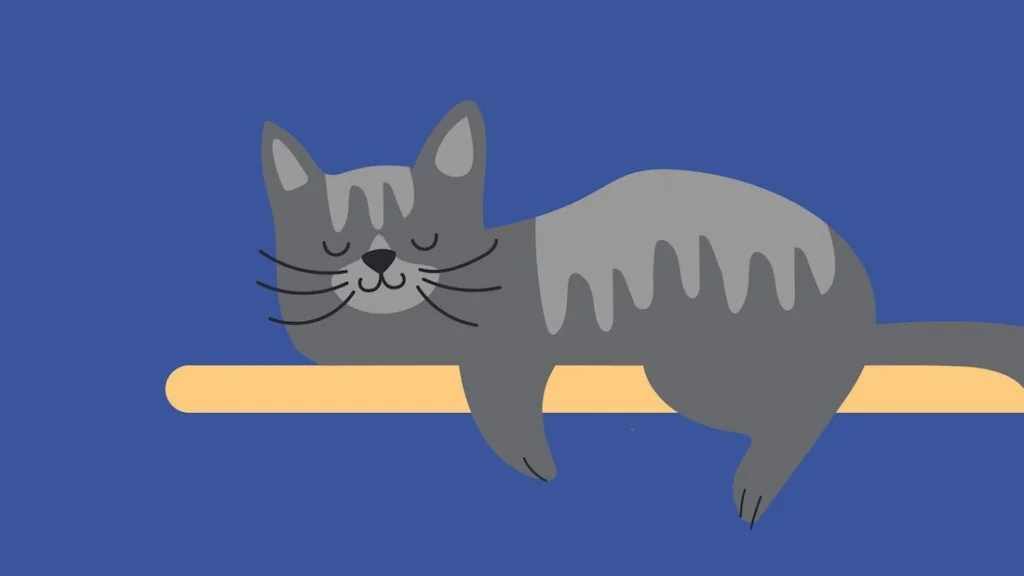
Cats that perch themselves high on a shelf or balcony are tapping into their natural instincts to be up high, says Whittenburg. “Cats tend to enjoy perching up high to enable them to protect themselves and to see any potential threats,” she says.
Cuddled with Fur Siblings (Or With You!)
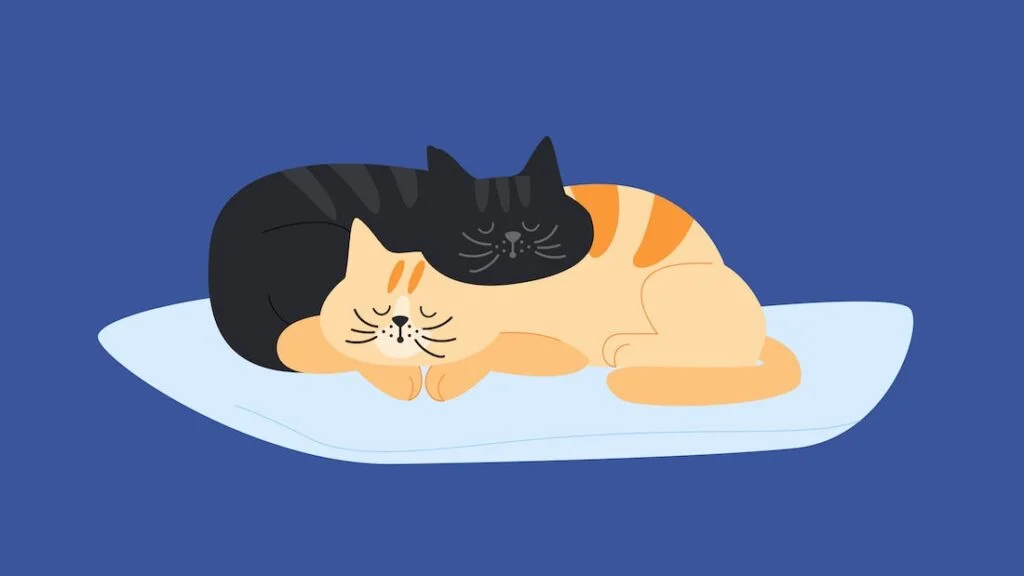
Cats may have a reputation for being aloof, but Moss points out that they can be deeply sociable and loving pets. “If your cat chooses to sleep either with you or with another pet, it’s a sign of deep trust and affection,” says Moss. “Cats that frequently sleep together may be bonded, meaning that they care deeply for one another and seek each other out for company.” In cool weather, she says cats may also cuddle up for extra warmth.
General Cat Sleeping Habits
Cats have what’s known as a polyphasic sleep pattern, meaning they prefer cat naps throughout the day over a single long sleep session. Moss says the average cat sleeps between 12 and 18 hours a day, but notes that some cats, like kittens and seniors (1), may sleep even longer. All those hours of sleep may break down into naps of varying lengths. “Cats often take the opportunity for a 10-minute snooze when they can,” says Moss, “but at other times may sleep more solidly for a much longer period.”
If your cat seems to rev up just as you’re ready to wind down, it’s pretty typical behavior. “Domestic cats are actually crepuscular, meaning they’re usually most active around dawn and dusk — the best times for hunting,” says Moss. There might be a number of reasons for it, from diet to age to personality. Check out our guide for sleep training your cat for a better night’s sleep (for the both of you!).
FAQs
How do cats sleep when they’re sick?
There’s no single “sick” sleep position for a cat, but Whittenburg notes that it is common for a sick cat to hide and be less interactive than normal. Some cats may be noticeably more or less active than what’s normal for them. “They may stay in one position, such as on their side, and not move much at all,” says Cutler. “In other cases, they may struggle to get comfortable and move around a lot.” Both experts recommend seeking a vet’s care if you notice changes to your cat’s sleep patterns or behavior that aren’t related to changes in their environment.
Why do cats sleep with their paws stretched out?
Usually, this position is an attempt from your cat to cool down — or warm up. Stretching out their front and back legs can help regulate body temperature. In a sunny spot, it’s a way to soak up the heat. In both cases, it’s indicative of a happy cat.
What does your cat’s sleeping position mean?
Different sleep positions can offer a little insight into your cat’s overall well-being. “Your cat’s sleeping position can be influenced by a whole range of factors, including their mood, stress levels, underlying illness and temperature,” says Moss. By familiarizing yourself with what’s normal for your cat, you’re in a good position to pick up on changes that might indicate a health issue.
The Last Word From Sleepopolis
Being mindful of your cat’s preferred sleeping positions is a good way of keeping an eye on their general health. “Illness and even slowly progressive conditions like arthritis can cause your cat to spend more time snoozing — and because cats are generally pretty stoic, this may be one of the only signs you see,” says Moss. If you’re noticing changes to your cat’s sleeping habits and positions, it’s probably worth contacting your vet.
Sources
1. Sordo L, Breheny C, Halls V, Cotter A, Tørnqvist-Johnsen C, Caney SMA, Gunn-Moore DA. Prevalence of Disease and Age-Related Behavioural Changes in Cats: Past and Present. Veterinary Sciences. 2020; 7(3):85. https://doi.org/10.3390/vetsci7030085
2. Primrose Moss, personal interview. July 2024.
3. Janet Cutler, personal interview. Juy 2024.
4. Jamie Whittenburg, personal interview. July 2024.


























